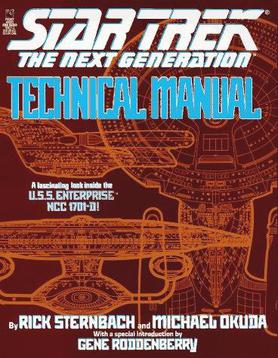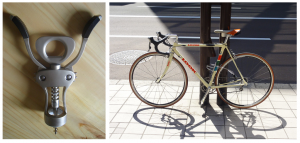7.4 Technical Descriptions and Definitions
Descriptive technical writing uses a combination of visuals and text to both “show” and “tell” the reader about the information being conveyed. Like more creative descriptions, technical descriptions sometimes draw on the “five senses” and metaphorical comparisons (analogies) to allow the reader to fully conceptualize what is being described. More often, however, they rely on concrete, measurable descriptors. Technical descriptions can take many forms, depending on purpose and audience. Descriptions can range from a brief sentence, to a paragraph, a whole section of a report, or an entire manual. Poorly written technical descriptions can cause confusion, waste time, and even result in catastrophe! Technical product descriptions are often legally required to ensure safety and compliance. Attention to detail is critical.
Product specifications require detailed descriptions of design features; instructions often require specific descriptive detail to “show” the reader what to do. Some general categories of technical descriptions include the following:
- Mechanism Descriptions: provide a detailed overview the physical aspects of a tool, machine or other mechanical device that has moving parts and is designed to perform a specific function. These could be product descriptions for sales or manufacturing, documentation of design specifications, info-graphics, etc. This chapter focuses in detail on this kind of description.
- Process Descriptions: detail a series of events (natural/biological/ecological, mechanical, social, or psychological phenomenon) that happen in particular sequence in order to achieve a specific outcome. These can be categorized into non-instructional processes (such as a process analyses of how an internal combustion engine works, or natural processes like photosynthesis) and instructional process (such as recommended/required procedures and explicit step-by-step instructions to be followed). (See Section 7.7 for detailed information on Writing Instructions).
- Definitions: clarify the specific meaning, often related to a specific context, or express the essential nature of the terms being defined. These can range in length from a simple clarifying phrase to an extended document of several pages. Definitions will often include detailed descriptions and visuals to illustrate ideas. Click on the link below to view a student PowerPoint presentation on how to write effective definitions for technical purposes. This presentation is included with express permission of the student.
Definitions in Technical Writing – Sample student presentation (.pdf)
Technical Description of a Mechanism
Mechanism descriptions should provide a clear understanding of the object being described, including
- General appearance and physical properties
- Overall function/purpose
- Component parts
- How the parts interact to create a functioning whole.
The reader should be able to clearly picture, and therefore understand, the nature of the object being described, what it does, and how it works.
In order to achieve this clarity for the reader, the writer must choose significant details and organize information logically. Select details that can be described precisely and measurably, such as
| color | materials | texture, smell, taste |
| shape | component parts | finish |
| size | properties | patterns, designs |
| dimensions | principles at work | interactions |
Depending on the reader’s need, the description may range from a general overview requiring only a few sentences to a multi-chapter manual detailing every aspect of the mechanism’s parts and functions in order to troubleshoot technical problems and complete repairs. For a fun example of the latter, see the Star Trek: The Next Generation: Technical Manual (cover depicted in Figure 7.4.1), which provides detailed descriptions of all equipment and technology used aboard the fictional U.S.S. Enterprise-D.

Before you begin to draft your description, you must consider your purpose and audience: Why does your audience need this description? What will they use it for? Are you describing different types of solar panels for the average consumers to help them choose the one that best fits their needs? Are you giving schematics to technicians and installers?
Once you have your purpose and audience clearly in focus, draft a description that includes the following elements:
- Definition: What is it, and what is its main purpose?
- Overview: Describe the mechanism’s overall appearance (“big picture”).
- Components: Describe the main component parts in labeled sections; consider the order of information carefully here. Create a logical connection between each component described.
- Explanation: how do the parts work together to fulfill its function? What key principles govern its functioning? Consider how much detail is necessary here for your intended audience.
- Visuals: include graphics that clearly illustrate the mechanism and/or its parts. Show the device as a whole; consider showing specific details in expanded views, cut-aways, or labeled diagrams. You may even embed or link to videos showing the device in action.
- Conclusion: depending on the purpose, you might review product’s history, availability, manufacturing, costs, warnings, etc.)
- References: Sources you have used in your description, or additional sources of information available (if relevant).
You might consider using a template, like the Technical Description Template below, keeping in mind that while templates can be helpful guides, they do not provide much flexibility and may not work for all situations.
| Audience and Purpose | Who will read this description and why? |
| Definition and Function | What is it? What does it do? What is its purpose? |
| Overview | Describe its overall appearance (shape, size, color, etc) |
| Components and Explanations | Describe the component parts (chose most relevant features) and explain how they work together |
| Visuals | What kind of illustrative graphics will you use? Where?
|
| Conclusion | Do you need to offer any further information? History? Warnings? Context? Costs? etc. |
| References | Any sources used, or supplemental sources to suggest |
Sample Descriptions
Examine the description of the “Up Goer Five” in Figure 7.4.2 (click on image for larger version). Who might the intended audience be?

Compare the description in Figure 7.4.2 to the information given on the NASA website about the Mars Curiosity Rover.
Note the differences in the level of detail, vocabulary, and overall purpose of the descriptions. If you used the information on the NASA site to fill in the Technical Description Template, you might end up with something like the following chart. Objectives
| Definition | Curiosity Rover – a NASA robot designed to explore Mars |
| Function | Travels around the Gale Crater on Mars, collecting data to send back to Earth. Its mission is to see if Mars could ever have supported life, and if humans could survive there someday |
| Overview | Car-sized, 6 wheel robot, about 7’ tall, with a roughly square chassis that has several appendages connected to it that house sensors of various types |
| Components |
|
| Visuals |
|
| Conclusion/Supplemental | Information about lifespan? Travel speed? Energy use? |
| References | NASA website – Mars Curiosity Rover page |
You may find that some of these elements are not necessary; again, consider what your target audience already knows. Strike a balance between unnecessarily stating the obvious and incorrectly assuming your readers have knowledge that they lack.
In refining the details of your description and its component parts, consider the following:
- Organization: Use a logical principle to organize your description
- Top to bottom (or foundation upward)
- Left to right (or right to left)
- Inside to outside (or outside to inside)
- Most important to least important features
- Central component to peripherals
- Material properties, etc.
- Language: Use specific, precise, concrete terms – avoid vague or overly-general terms
- Use correct terminology – define terms as necessary for your audience
- Use analogy to describe an unfamiliar thing in terms of a familiar thing
- Use objective language – no “ad speak” or subjective terms
- Use present tense, active verbs to describe how the device appears and what it does
- Use words that create vivid and specific pictures in the reader’s mind.
EXERCISE 7.2 Practice technical description
Choose a common, everyday object (such as one of the objects in Figure 7.4.3) and draft a technical description for an audience unfamiliar with the object. Start by imagining a target audience and purpose, and then try filling in the Technical Description Template with detailed information. Using the information in your template, draft a short description of 1-2 paragraphs, and add properly-captioned visuals.

- R. Sturnback and M. Okuna, Star Trek: The Next Generation: Technical Manual. New York: Pocket Books, 1991. ↵
- R. Munroe, "Up Goer Five" [Online]. Available: https://xkcd.com/1133/ Also see "1133 Up Goer Five - explained," Explain xkcd wiki [Online]. Available: https://www.explainxkcd.com/wiki/index.php/1133:_Up_Goer_Five . CC-BY-NC 2.5. ↵
- [Corkscrew and bicycle images]. [Online]. Available: https://www.flickr.com/photos/dogbomb/527733767 and https://www.flickr.com/photos/8205548@N08/4607907389. CC BY 2.0. ↵

